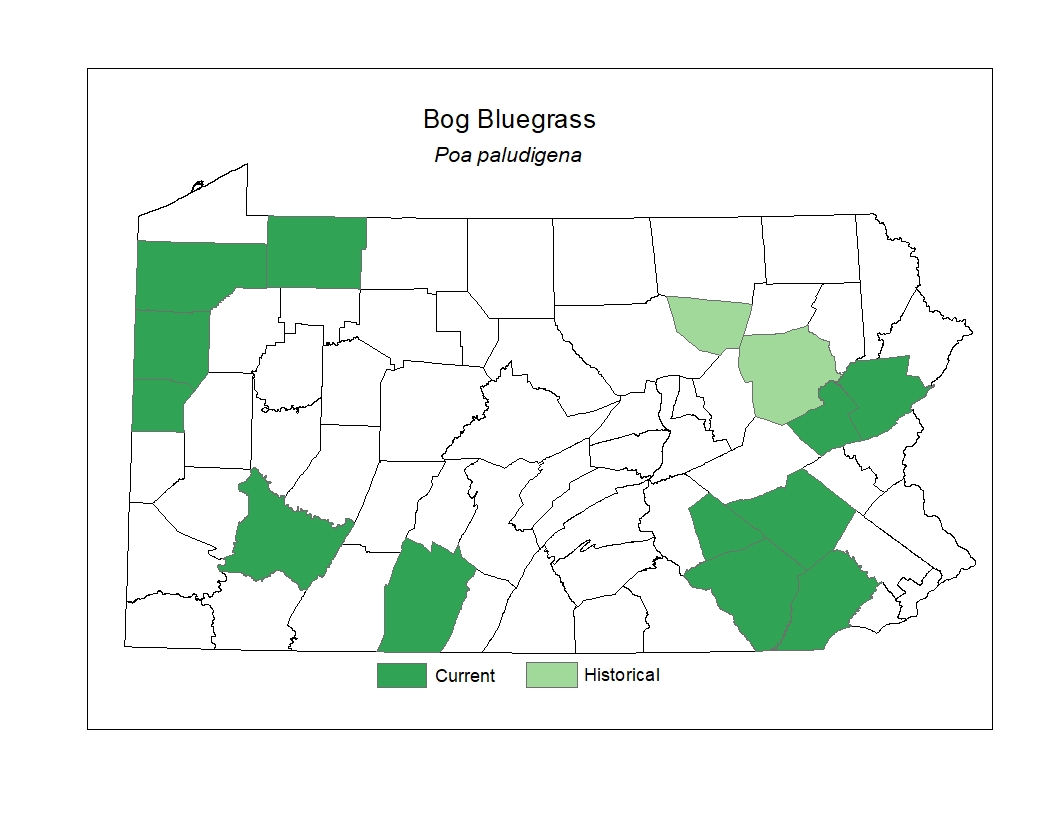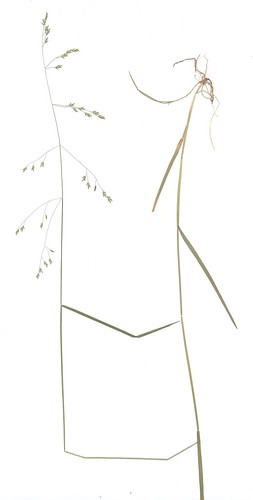 Species Factsheets
Species Factsheets
Poa paludigena
Bog Bluegrass
State Status: Pennsylvania Threatened (PT)
PBS Status: Pennsylvania Rare (PR)
Federal Status:
Global Rank: G3
![]() rank interpretation
rank interpretation
State Rank: S3
Did You Know?
This particular species can be distinguished from other Poa species by its lemmas - they are pubescent on the margins but glabrous between the veins.
Description
Bog bluegrass (Poa paludigena) has a very slender stem, which often reclines on other vegetation or the substrate, and may grow from 15-70cm in length. The leaves are alternately arranged, narrow, elongate, 2mm wide, and up to 10cm long. The flowers, appearing from mid May to early June, are aggregated in small spikelets that are individually 3-5mm long. The spikelets are remotely scattered in a terminal cluster, with the slender branches of thecluster, especially the lower ones, stiffly spreading and/or bent downward as the fruits become mature.
Rank Justification
Vulnerable in the nation or state due to a restricted range, relatively few populations (often 80 or fewer), recent and widespread declines, or other factors making it vulnerable to extirpation.
PABS
The PA Biological Survey (PABS) considers bog bluegrass to be a species of special concern, based on the few occurrences that have been recently confirmed and its very specialized wetland habitat. It has a PA legal rarity status of Threatened and a PABS suggested rarity status of Rare. About thirty populations are currently known from the state.
Habitat
It grows in swamps, seepy woods, and along spring-fed streamlets.
Survey Dates
Flowers late May - June
Distribution
In Pennsylvania, it has been documented historically in numerous widely scattered counties.

Management
The viability of populations of bog bluegrass and its habitat may be enhanced by creating buffers around wetlands, controlling invasive species, and protecting the natural hydrology surrounding wetlands. The areas supporting populations should be managed in a way that ensures the continuation of excellent water quality and neutral or calcareous water chemistry.
Conservation Status Map


NatureServe. 2017. NatureServe Explorer: An online encyclopedia of life [web application]. Version 7.1. NatureServe, Arlington, Virginia. Available https://explorer.natureserve.org.
https://dnr.wi.gov/topic/EndangeredResources/Plants.asp?mode=detail&SpecCode=PMPOA4Z1W0
- NatureServe. 2018. NatureServe Explorer: An online encyclopedia of life [web application]. Version 7.1. NatureServe, Arlington, Virginia. Available at https://www.natureserve.org/explorer
- Pennsylvania Natural Heritage Program. 2018.
- Rhoads, A.F. and W.M. Klein, Jr. 1993. The Vascular Flora of Pennsylvania. American Philosophical Society, Philadelphia, Pennsylvania. Rhoads, A.F. and T.A. Block.
- 2007. The Plants of Pennsylvania: An Illustrated Manual. 2nd edition. University of Pennsylvania Press, Philadelphia, Pennsylvania.







